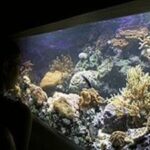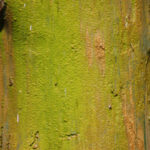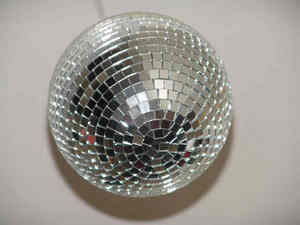To many, sponges are creatures that are vague to us to say the least. A living organism, or just some funky type of algae, plant or life form? Well, sponges are actually a multi-cellular organism that come in a multitude of colors sizes and shapes. Sponges make up the phylum Porifera, which means (carry or bear openings). Sponges have been evolving, adapting and inhabiting our earth 500 million years before the Tyrannosaurus Rex first stepped foot on the planet. It is amazing that sponges have been able to cope with ever changing environmental conditions such as glaciers, volcanic and meteoric disturbances, temperature variations and diseases that have been placing a burden on an organisms ability to adapt or become extinct since the dawn of time!
Their ability to be pressed through a cheesecloth and regrow on the other side, or to be placed in a blender, chopped and placed back in your tank, only to have a plethora of sponge colonies develop, is truly amazing. Since sponges do not have organs and are composed of many individual cells, they possess incredible regenerative qualities. New sponges, formed as aggregates can reorganize themselves rather quickly after going through something as drastic as being chopped up in a blender and placed back in a tank. Though the new sponge will not look much like the initial mother colony due to its disorganized structure and have survival limitations, it will grow very fast. Sponges can double in size at an alarming rate in just six months time, tripling in just one years time.
Sponges are the simplest form of life, just above the protozoans(uni-cellular tissue creatures) and just below Cnidarians(stinging/nematocyst oriented corals and anemones). Their are about 500 freshwater species of sponge and over 5000 species of marine sponge. Sponges are sessile and a whole sponge is actually the result of a colony as opposed to a singular animal. Many species of sponge are made available to us either as hitchhikers on live rock, corals, Tridacna Clams, snails, certain crabs(decorator), or purchased as a separate entity all together.
Asexual reproduction is evident with sponges by forming buds and sexual maturity is achieved between 3-5 years of age. Sexual reproduction happens in the summer months as growth slows down considerably thus allowing sponges to focus and conserve their energy towards reproduction, then in the fall to spring months, they can switch cylinders again towards growth. Propagation is also achieved through other methods as sponges are hermaphroditic, meaning they contain BOTH male and female sex organs. Fragmentation is also another pertinent example of sponges being able to reproduce, by breaking of a piece of itself to form another daughter sponge.
Sponge require varying lighting schemes depending on its occurrence in nature, growth form and color. Water flow and nutrient dissolved organics found within the water column is also very important to the overall success and growth of sponges. Cryptic and encrusting sponges usually are less light demanding sponges whereas the finger/tree sponges are a more light loving species. Sponges are evident at varying depths and locations in their natural environment, so based on this, it is useful to know a little history and info regarding the sponge you plan on purchasing to ensure that has the right husbandry requirements to have any type of success. The purple and blue colored sponges are technically from the deeper regions, with the myriad of other colored sponges found in shallower locals. This is not carved in stone however, as the place with which a sponge resides takes precedence over the depth. By this I mean that you can have cryptic green, red or orange sponges residing only a few feet beneath the waters surface, but its growth may be on the underside or side of live rock where the bright irradiance of the suns rays do not reach the sponge.
The collection, transfer and adding to your tank requires some proper handling and procedural technique. The key is not to introduce the sponge to air, as air bubbles get trapped and the sponge is not able to handle the trapped air inside its its cellular wall. Choanocyte and pinacocyte cells are capable of removing and filtering foodstuff and other nutrients, carrying oxygen, ridding carbon dioxide and such but are not able to handle air trapped within its body through its atrium. Sponges are also susceptible to high water temperature readings and salinity levels so, care should be asserted. Once a sponge is added to your tank and has taken up a stronghold on a piece of live rock etc. your sponge should reap a healthy and long lived life. Sponges should be a uniform color and consistency and best to be accompanied by a piece of live rock that it initially grew on in the wild or in a farm setting. One important thing to be alert to is the growth of algae or sediment/detritus accumulation. Keeping sponges free and clear of these variable by having a moderate water flow will essentially alleviate the damages associated with these situations happening.
As for predators, depending on the type of sponge, many sponges do not have many predators as their toxic make-up deter would be predators from consuming them. Certain Angelfish, File fish, puffers, Sea Stars and the endangered Hawks bill Turtle will consume the less toxic species of sponge. Other than that, sponges should not have any predatory problems that one should be alarmed about.
As a whole, sponges can really add some pizazz to your tanks population, by adding some brilliant color, growth diversity and uniqueness. Their ability to make exceptional biological filters affords them a place within your tank as well. By reading and educating yourself as to the type of sponge, husbandry requirements and compatibility issues, adding one of these porifera to your tank will put the explanation point on your tank and its uniqueness.
I know, that the introduction of sponges into my tank whether by accident, usually by arriving as a hitchhiker on live rock, coral, clam etc., or me actually purchasing the sponge, it has afforded me a nice change in appearance, enjoyment and the notion that I am receiving the added benefit of increased biological filtration. Once deemed difficult to keep, too delicate and sensitive for anyone but scientist and other professionals, sponges have now become more prevalent and todays aquarists are now reaping the rewards that accompany raising and keeping sponges in todays marine tanks.





